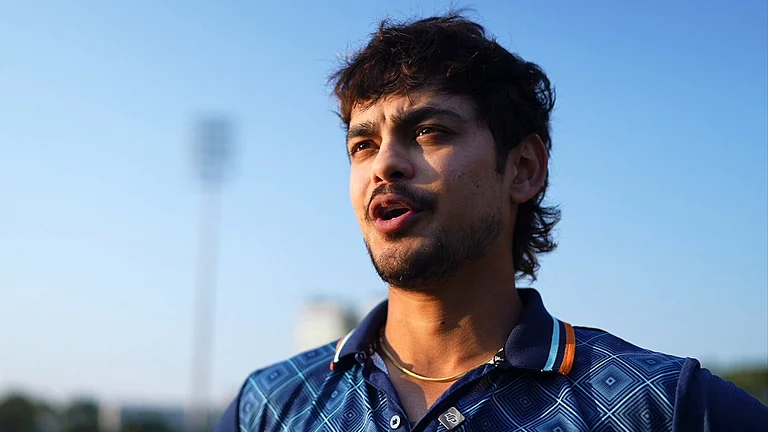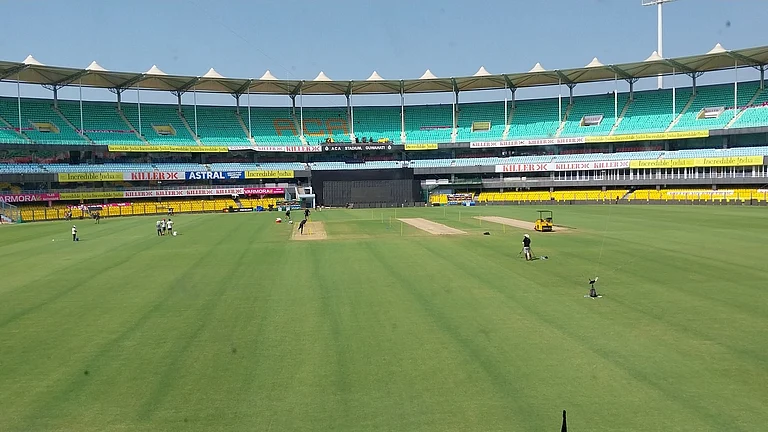If you haven’t heard the news yet, it’s streaming on a screen near you…and it’s in Malayalam. Nope, it’s not the regular news. You already know it’s been a devastating year, that the health system and the economy are both gasping for breath, and that everything is closed, including theatres. So what are you missing? Well, a burgeoning mass of movie lovers will tell you you’re really missing something if you haven’t encountered new Malayalam cinema. Yes, film content from the tiny southern state of Kerala has become red hot on the OTT space. A new breed of actors and filmmakers are creating content that’s being lapped up by audiences across the globe—Malayalis or not. The streaming platforms operating in India pretty much fell on each other trying to procure Malayalam content made by new-generation directors, especially if it featured Fahadh Faasil, but not restricted to that.
Many films that premiered on OTT—C U Soon, The Great Indian Kitchen, Irul, Joji et al—gathered both critical acclaim and viewership, increasing the subscription base of platforms. And films that had to be taken off theatres after a few days of release due to the Covid second wave—like Nayattu, Operation Java and Aarkkariyam—went on to become hits after being released on OTT. After a pre-birth in Ritu and the experimental anthology Kerala Café (both 2009), the ‘new wave’ began in earnest a decade ago—with Traffic and Chappa Kurishu (both 2011). Worthy successors followed, with director Aashiq Abu playing a seminal role, and Fahadh often being a central element (see The Second Half: 2011-21). In the past five years, this has attained critical mass—a churn where young minds in acting, scripting, direction, camera, editing and even poster designing gave a new spin to Malayalam cinema, which was hitherto running on the star power of Mohanlal and Mammootty. Themes and stories that would once be deemed outlandish began to be accepted by audiences bred on mass masala entertainers.
Says Mahesh Narayanan, who started as an editor and grew into many other roles, including directing Fahadh in the trendsetting Take Off and C U Soon, plus on-the-cusp-of-release Malik: “A churning has happened. Malayalam cinema is in a good space where content is king. I would say the cinema envisioned by all-time greats like Bharathan, Padmarajan and K.G. George has made a smooth crossover…today we are getting accolades from the world over. OTT has speeded up the process. Audiences are enjoying our cinema, which is rooted in the socio-economic-political milieu of Kerala.”
In many ways, Fahadh embodies the new cinema. His father Fazil, a veteran who introduced Mohanlal to cinema as a villain in Manjil Virinja Pookkal (1980), specialised in lavish romantic musicals. But when he launched a 19-year-old Fahadh in that same mould in Kaiyethum Doorathu (2002), the film bombed. Fahadh knew he was not cut out to be a dancing, singing romantic hero, and went off to the US to do a film course. His next role came after a five-year hiatus. In 2011, he attracted serious attention with the slick thriller Chappa Kurishu. A series of top-notch offbeat winners flowed thereafter—22 Female Kottayam, Diamond Necklace, Annayum Rasoolum et al. Fahadh was seen as an actor with a difference, willing to experiment and do characters that his contemporaries wouldn’t touch with a 10-foot barge pole. (Which hero would agree to be bobbitised on screen…a la 22FK?) A teeming crowd of writers, editors and cinematographers cohered around his figure. Directors like Aashiq Abu and Rajeev Ravi had already set up an enabling ecosystem. The new set soon counted in its ranks talented writers and directors like Syam Pushkaran, Dileesh Pothan and Mahesh Narayanan. Ideas had primacy in this new ethos—the script was the central protagonist, not stars with huge fan clubs. Commercial success blended with critical acclaim to create a further impetus for this script-centred approach. Pothan, at an online interaction during the promotion of Joji, had put his finger on the nub: “We work on the basic script first, then do the casting.” In Pothan’s films, you often see unknown or minor actors shining. “A lot of original ideas and styles of filmmaking not seen before have emerged,’’ says movie critic and writer Pramod Kumar. “The newness gives a sense of immersiveness, in terms of content, treatment and performance.”

(Clockwise) Darshana Rajendran, Sai Pallavi and Andrea Jeremiah
Malayalam cinema has always gone beyond “movie star looks”—performance has always been non-negotiable. That’s why even arthouse greats like Adoor and Aravindan could cast a Mammooty or a Mohanlal—this is the core ideological difference from Bollywood. Today, Malayalam has a whole set of actors who may not fit a straitjacketed idea of a ‘hero’ or ‘heroine’, but can carry a really good film on their shoulders all the way to B.O. success—Biju Menon, Suraj Venjaramoodu, Joji George, Nimisha Sajayan, Aparna Balamurali, Sai Pallavi, Rejisha Vijayan all play that role on the strength of pure talent. Even a traditional romantic hero like Kunchacko Boban is part of two of the most successful films of 2021—Anjaam Paathira and Nayattu. No, he doesn’t sing songs or romance. The formula-oriented character arc and the three-act structure of mainstream cinema have virtually disappeared.
ALSO READ: ‘Fahadh And I Go A Long Way Back’
In an earlier interview with this writer, Fahadh had said: “The change has come through because of creative writers and directors willing to take the road less travelled and to experiment with new, exciting subjects that struck a chord with the viewers.” On his choice of scripts, FaFa, as he is affectionately known, said: “The way a story is told is what excites me. I don’t like to be repetitive in the kind of roles I do. You can call me lucky…I’m at the right place at the right time.”

Says Vivek Thomas Varghese, a director-producer who’d earlier worked in MTV and who did Athiran (2019) with Fahadh: “I love Malayalam cinema. It has definitely changed in the last few years. The biggest distinguisher is the fact that a small regional industry has adapted the best to a new-age OTT style of film distribution. That has increased its footprint worldwide.” He acknowledges that Malayalam cinema always had very strong scripts, with master storytellers perpetually keen to push the boundaries. “Unlike other industries, an actor is crowned a star here not merely because of charisma or box-office numbers, he’s judged by the sheer potential as an actor. A prime example would be Mohanlal and Mammootty, both fine actors who have excelled in the crossover films of Bharathan, Padmarajan, Lohithadas. The current set of actors and filmmakers carry forward this ideology. And advanced technology has come in, so the films appeal even to international audiences.”
ALSO READ: ‘I Try To Bring Theme And Characters Alive’
The way the industry changed from celluloid to digital allowed young minds to explore the medium with fresh ideas. That explains why, in the past few years, Malayalam produced an average of 160 films a year, before the pandemic pushed it down to less than 80 in 2020. Digitalisation, from the shoot to screening, has set off a production boom, creating new work avenues. The growth of multiplexes and the renovation/conversion of old single screens in Tier 2/3 towns into two or three screens also helped. Among India’s top 10 collecting multiplexes is PVR’s 10-screen multiplex at the swanky Lulu Mall in Kochi. One of INOX’s best properties is at the Shobha City Mall, on the Thrissur-Guruvayur highway—an area that was a paddy field just over a decade ago! Suresh Shenoy, a leading theatre owner in Kochi, recently renovated his iconic Shenoys into a five-screen multiplex and collections boomed. From 375 in 2012, the number of screens has risen to 625, with another 150 in the pipeline at the time of the pandemic. The Kerala government itself has around 30 screens across the state, under the Kairali-Sree brand. Most new screens have 4K projection with Dolby Atmos sound systems—all of these are elements in the popularity of the new cinema.
ALSO READ: Time, Space And The Moral Pandemic
Now with cinema halls closed, OTT has given a new lease of life to Malayalam cinema. When Nayattu and Aarkkariyam were taken off the theatres due to the pandemic, it was the streaming platforms that came to the rescue. Initially eight Malayalam-centric OTT platforms made Aarkkariyam popular before it started streaming on Amazon Prime Video. These small platforms like Neestream, Gudsho, Cinemapreneur, Roots, Cave etc have come as a breath of life for small-budget niche content. The Great Indian Kitchen was famously rejected by Amazon before Neestream made it popular. These platforms operate from different geographical locations in the world on both subscription and pay-per-view or rent-buy options. They are not in competition with giants like Netflix or Amazon, but their penetration in their committed markets helped boost Malayalam niche content. From those small spaces, Malayalam cinema has created something big.
ALSO READ: ‘I Want To Experiment With Form Next’
(This appeared in the print edition as "They Call Him FaFa")
Sreedhar Pillai, Film critic, writer and trade analyst























